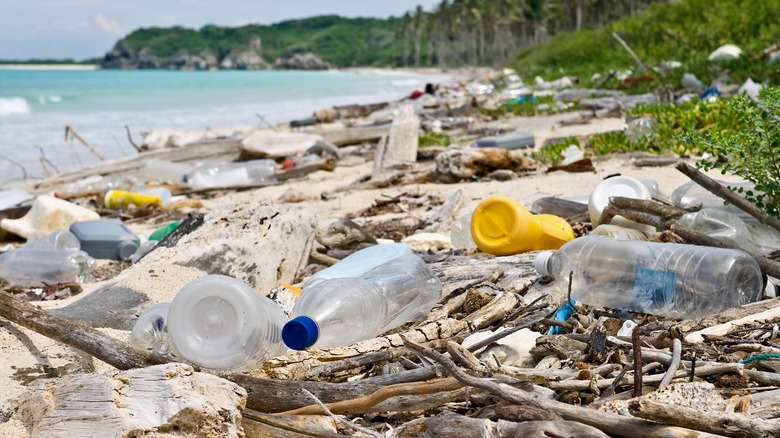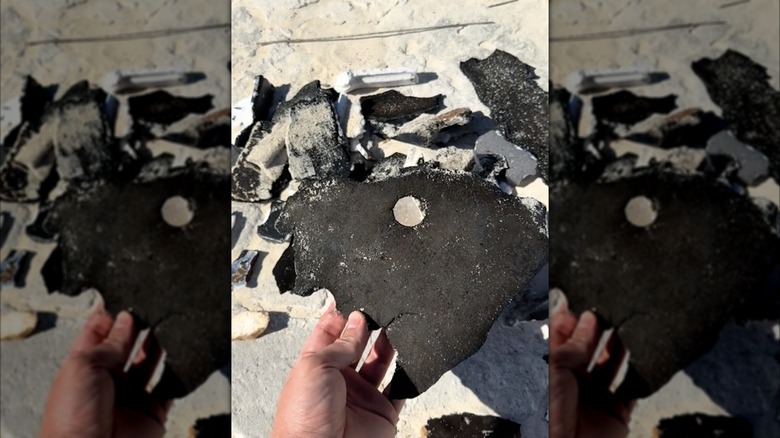The Space-Age 'Litter' You Might Have To Worry About On Your Next Caribbean Beach Vacation
The Caribbean has a litter problem. In the northeast Caribbean alone, it's estimated that there are up to 78,000 pieces of plastic per square mile. This plastic debris drifts across the sea, washing up on beaches throughout the region. Jamaica faces the highest concentration, with about 3,000 items per mile. The most common items found include bottles, caps, bags, lids, straws, and foam containers. But now, the region has a new problem.
On January 16, 2025, SpaceX launched another Starship rocket test flight. The launch yielded mixed results because while the tower caught the returning booster in a remarkable feat of engineering, the Starship broke up after roughly 8.5 minutes in what SpaceX euphemistically termed a "rapid unscheduled disassembly" (via AP News). Onlookers captured the vessel's glowing remains tearing through the atmosphere above the Turks and Caicos Islands, a British overseas territory just outside of the Caribbean Sea in the western Atlantic Ocean. The spectacle made for incredible footage, but the flaming space litter was barrelling towards the island nation of 46,000 people.
After the launch, island authorities reported property damage but, thankfully, no injuries. However, officials advised caution, stressing that the debris could contain hazardous materials. So, if you're heading to the Turks and Caicos Islands anytime soon, keep an eye out — you might spot lumps of charred space junk among the quiet, paradisiacal towns with clear water and white sand and award-winning family resorts with uncrowded pristine beaches.
Help authorities find scorched space junk
In response to the incident, the Federal Aviation Administration (FAA) grounded SpaceX's Starship program until a full investigation could determine the cause of the failure. Meanwhile, numerous videos circulated online, showing bystanders handling scorched fragments that appeared to be remnants of the Starship rocket. Florida tourists Maxim and Elena Zavet found several pieces scattered across the beach near their villa. Following the explosion some 90 miles above the earth, these fragments underwent severe stress and disintegrated upon re-entry after passing the Kármán line, a boundary 62 miles above the Earth's mean sea level that distinguishes the border of space. Maxim tells Fox Orlando, "It's almost like a rubber, almost like a tire, but you can see it's been burnt."
Days later, on January 25, local government officials met with SpaceX and the U.K. Air Accidents Investigation Branch to plan the recovery of the Starship debris. Members of the public are urged to report all sightings of space debris to nationalsecurity@gov.tc with the subject title "SpaceX Debris." Salient details of your email should include the location with coordinates, the time of sighting, and a photograph of the item. Should you find any debris, please note that this remains property of SpaceX.
This is not the first time a rocket has disintegrated over the Caribbean. In December 2024, pieces of the Chinese CZ-4B rocket launched from Xichang Space Center broke up over Puerto Rico. For more otherworldly sights, head to Florida's Space Coast boasting lagoons, museums, and rocket launches.

